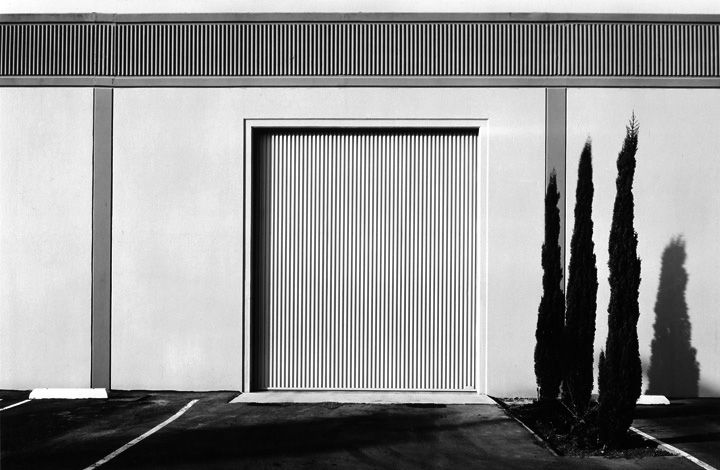Lewis Baltz was a visual artist and photographer who became an important figure in the New Topographic movement of the late 1970s. His work has been published in a number of books, presented in numerous exhibitions, and appeared in museums such as the Museum of Modern Art. Born in Newport Beach, California, Baltz graduated with a BFA in Fine Arts from San Francisco Art Institute in 1969 and held a Master of Fine Arts degree from Claremont Graduate School. He received several scholarships and awards including a scholarship from the National Endowment For the Arts.

Baltz 
His work
His books and exhibitions, his “topographic work”, such as The New Industrial Parks, Nevada, San Quentin Point, Candlestick Point (84 photographs documenting a public space near Candlestick Park, ruined by natural detritus and human intervention), expose the crisis of technology and define both objectivity and the role of the artist in photographs.
“I never had any profound loyalty to the idea of photography as a medium but simply as the most efficient way of making or recording an image.”
His work is focused on searching for beauty in desolation and destruction. Baltz’s images describe the architecture of the human landscape: offices, factories and parking lots. His pictures are the reflection of control, power, and influenced by and over human beings. His minimalistic photographs in the trilogy Ronde de Nuit, Docile Bodies, and Politics of Bacteria, picture the void of the other.

His work, like that of others associated with the New Topographics, challenges the nineteenth century tradition of western landscape photography represented by Timothy O’Sullivan, Carleton Watkins, and William Henry Jackson by presenting a less innocent view of the landscape. Baltz’s perception of the landscape necessarily reveals the effects of twentieth-century culture and suburban development on the nation’s topography.
He published several books of his work including Geschichten von Verlangen und Macht, with Slavica Perkovic. Other photographic series, including Sites of Technology (1989–92), depict the clinical, pristine interiors of hi-tech industries and government research centres, principally in France and Japan. In 1995, the story Deaths in Newport was produced as a book, Baltz also produced a number of video works.

Baltz was shooting in colour and, long before it became accepted practice in the conceptual photography world, was making large-scale prints. He was interested, he said, in representing “the generic European city”. Out of this grew a fascination with digital technology and its uses, not least in surveillance and control. In 1992, he created the monumental Ronde de Nuit installation at the Pompidou Centre in Paris, a series of images printed on Cibachrome panels that together measured 2.1m (7ft) high and 11.9m (39ft) across.
Link to my project

His work 
My work
Why his work has has influenced me: The message behind his work is very important and I would like this to be reflected in my future personal study as it think that our urban environment is one which should be preserved in its current form, as future industrialisation because of Jersey’s increasing population means that there is a threat that our natural island will look significantly different in the future, with not as much of out natural landscapes left. I think the fact that Baltz that was about to visually communicate a problem that was occuring throughtout the world is quite inspirational, and the fact that these issues are still going on today means that these images are easy to create.

What I like about his work: I think that the simplicity of his work makes him more memorable and along with the monochromatic photography, this makes more unique pieces. I also like that for this time this type of photography was to demonstrate the affects of mankind on the natural environment and his work demonstrates this well as the builders are the main focal point of the images. I think that Lewis Baltz work is some of my favourite as it links in with the theme of Anthropocene, which is linked to my most successful project in photography so far. He mainly focuses on urban landscapes which was has been amongst my favourite photoshoots I have done so far. I think that’s important to note that some of my work will be taking a lot of inspiration from Baltz and the other parts will be using heavily editing to make these structures look they are not manmade at all.
Image Analysis

I have selected this image to analyse as I think the overall composition of the image is one of its main strengths, as it means that the silhouette of the mountain is the background of the image and that the main houses in the front create a focal point for the image. Furthermore, I think the lighting of this image brings and all of its features and makes it more cohesive as the lighting from under the roof trim of the house means that strong shadows are created, as the brightness of the lighting in the sky creates contrast between it and the outline of the mountains. Additionally, I think that the clarity of the image makes it stand out more as the details in the brickwork of the building and even the blinds in the windows creates contrast. This is shown as theres lots of details within the foreground of the photograph and this lack in the background, however this is not a negative as it demonstrates the rule of thirds, as the pavement, housing and mountains/ skyline and very clearly separated in this piece. It’s also important to note how important the different shapes and lines are within this image, as the vertical lines contradicts with the horizon created but the mountain, and the squares and rectangles contrast with the smooth natural landscape. This is a good example of The New Topographic’s work as their is a manmade contrast created with the lighting in this image, as a somewhat natural contrast between the housing and landscape further away in the image.





